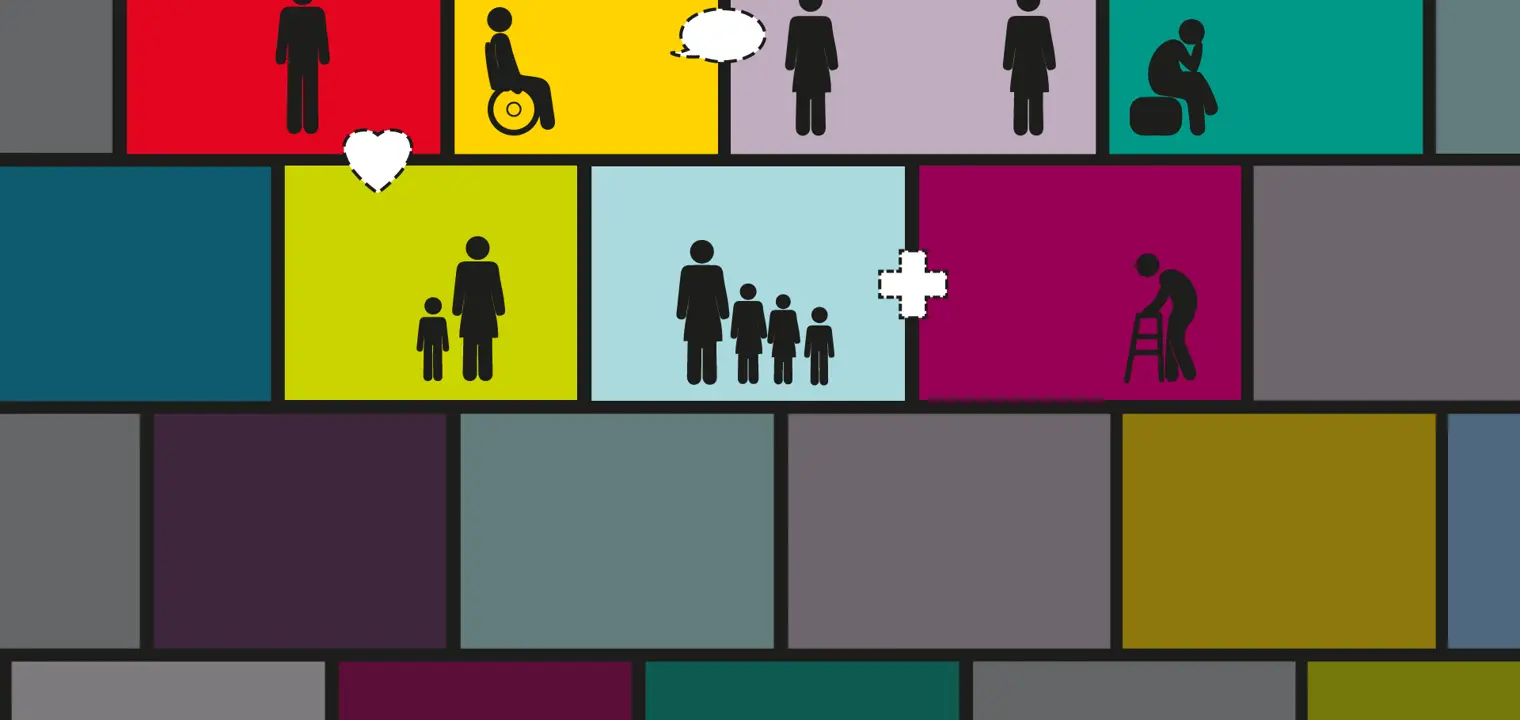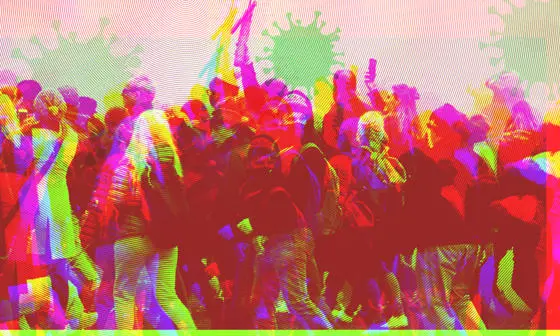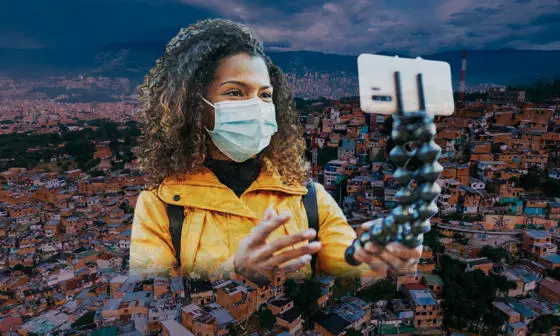Building communities in isolation: how COVID regulations have impacted society

Contents
- Narratives of blame and why categorisation brings with it the danger of stigma
- The "household", ethnic minorities and the impact of government policy on those outside the "nuclear" ideal
- Domestic violence and the inequalities of home life: the pandemic has shone a light on the difficulties many face at home
- "Stay home, stay safe" and the impact on our relationships and mental health
The categories we are placed in shape our relationships to the world around us. This is especially true during a national crisis, and something experienced by us all during the COVID-19 pandemic. During lockdown, our daily roles inside and outside the house, as well as the very homes we live in, became individual units of a nationwide pandemic response.
The government has long relied on certain categorisations to make policy. As anthropologists, we recognise the social logics that connect classification and decision-making – by government as in our daily lives – to be partial, and to produce as well as to reflect lived experiences.
The COVID and Care Research Group in the Department of Anthropology at LSE was convened under the leadership of Professor Laura Bear to provide an anthropological perspective on categories put into motion by policymakers during the crisis - examining what these both produce and eclipse. This has been a collaborative effort, intended to produce a constructive yet critical response to government policy-making and emerging media narratives.
Since March 2020, our qualitative research, based on observation, survey and interview data, has allowed us to view today’s big issues from a multitude of perspectives and draw out common threads and lines of division. In tracking responses to the pandemic across layers of society, we have asked, "how do these diverse accounts produce ways of identifying and interacting that dispute or exceed ‘official’ categories?". Our answers are derived largely from accounts of our interlocutors, and often reveal forms of stigma that are inflected in and generated by government policies.
Our case study of Leicester showcased an industrial and ethnically diverse population cast as ‘lepers’ in popular media and ‘punished’ for high rates of transmission with extended local lockdown.
Narratives of blame and why categorisation brings with it the danger of stigma
Because categorisation sets standards for "normality", stigma follows close behind. In a pandemic, the stakes of deviation from the norm are heightened: "breaking the rules" carries the risk of social stigma, but also of infection and death. As necessary as lockdown policies have been (and may continue to be), it is critical to examine the effects of such loaded classification.
Our comprehensive report "A Right to Care", published in October 2020, focused on a range of categories put into motion in the crisis, including "household", "BAME", "worker", "business", "social contact" and "viral". Through our research, we saw how these shaped people’s relationships to each other and institutions, and how they have come to eclipse varied gendered, raced and classed forms of labour, care and kinship.
We have become particularly concerned with unpacking narratives of blame that have stigmatised essential workers, minority communities, informal and gendered labour, young people, and entire geographical areas. Our case study of Leicester, for example, showcased an industrial and ethnically diverse population cast as "lepers" in popular media and "punished" for high rates of transmission with extended local lockdown.
The original ‘Rule of Six’ contributed to the stigmatisation of large families seen in public together and to blame narratives targeting minority and immigrant groups.
The "household", ethnic minorities and the impact of government policy on those outside the "nuclear" ideal
To take just one of these categories - the "household". The term contains certain ideas of houses and the types of relations they are meant to "hold", particularly the heteronormative nuclear household as a stable, self-sustaining unit. The upheavals of the pandemic, however, have brought attention to the many ways in which "households" are, in fact, highly flexible and porous. After the first lockdown, when many moved to be closer to "vulnerable" family members, caring relationships were complicated by rules restricting movement outside the walls of physical houses.
Before the concept of "support bubbles" was introduced, vital forms of care, informal labour, and family relations that exceed or permeate the bounds of a house, were written out of lockdown policy and, by exclusion, cast as unsafe or "risky". Initial lockdown restrictions did not make exemptions for family members living nearby to provide vital social and health-related support. Meanwhile, the relations contained within houses were often not those of the nuclear family, for example the single mum living with her mother or the housemates forced together by skyrocketing rents.
The assumption that ‘home’ is a sanctuary has been disrupted by reports of increased domestic abuse throughout the pandemic.
The "household" has often framed conversations about ethnic and racial disparities in rates of COVID-19-related infection and mortality. Throughout the pandemic, larger household sizes amongst BAME communities, especially Bangladeshi and Pakistani populations, have been identified by researchers and statisticians as one factor underlying these inequalities.
From the first national lockdown, "multigenerational households" have been written out of policies that assume the nuclear household as the national norm. The original "Rule of Six", for example, contributed to the stigmatisation of large families seen in public together and to blame narratives targeting minority and immigrant groups.
Domestic violence and the inequalities of home life: the pandemic has shone a light on the difficulties many face at home
The household is also often held as a domestic space separable from work, yet the crisis has rendered visible interconnected domestic and labour relations. Those engaged in caring labour, like cleaners, support workers and nannies, enter houses to sustain domestic life. These domestic workers, usually women and often from minorities hired as "informal" workers, were largely excluded from furlough schemes.
In later stages of the pandemic, extended family members’ roles in at-home care were often not considered legitimate unless waged; cleaners were allowed to enter houses but not grandparents who may have been equally crucial, particularly for poorer households.
Meanwhile, those formally classified as "essential workers" were forced to navigate inconsistent mandates to "stay at home" and perform "essential" work, driving a wedge between family members with conflicting vulnerabilities. Many essential workers expressed intense anxiety around the rituals of "boundary setting" – changing clothes or meticulously sanitising when returning home - for which they felt solely responsible.
"Stay home, stay safe" and the impact on our relationships and mental health
More broadly, during the pandemic, people have been asked to "stay at home" in order to "stay safe". The assumption that "home" is a sanctuary has been disrupted by reports of increased domestic abuse throughout the pandemic and by inquiries into the impacts of isolation on wellbeing.
Over a year after the start of the pandemic, we are increasingly hearing talk of a "second pandemic" - this time of "mental health". We have found such appeals to "mental health" often frame individual people or household "units" as responsible for managing the symptoms of larger, systematic social problems (for example, by "taking responsibility" of personal health and daily habits), in turn leading to increased isolation and vulnerability.
As "social contact" has become understood as a vector of viral contagion, some have struggled to articulate a desire - indeed a need - for social relationships. Coming out of lockdown, the pandemic has shown us how much we miss one another. Yet, while "the economy", "health" and "mental health" are modes to frame policy, many still struggle to find grounds to appeal for relationships – however they are spatially configured – to be considered vital in and of themselves.
In our research we have seen how formal and informal care relationships sustain lives and livelihoods. We have sought to aid in formulating policy that facilitates these relationships, through the concept of "bubbles", which the lead of our project, Professor Laura Bear, advocated in policymaking forums such as the SPI-B branch of SAGE. Such policies, implemented in countries around the world, can be read as recognition that ongoing transmission is much a problem of policy as one of compliance – a step towards recognizing the ‘"citizen" as inherently, essentially, social.
The LSE iQ podcast episode and film How has COVID-19 produced new forms of stigma? are also available on LSE Player.
Download a PDF version of this article






